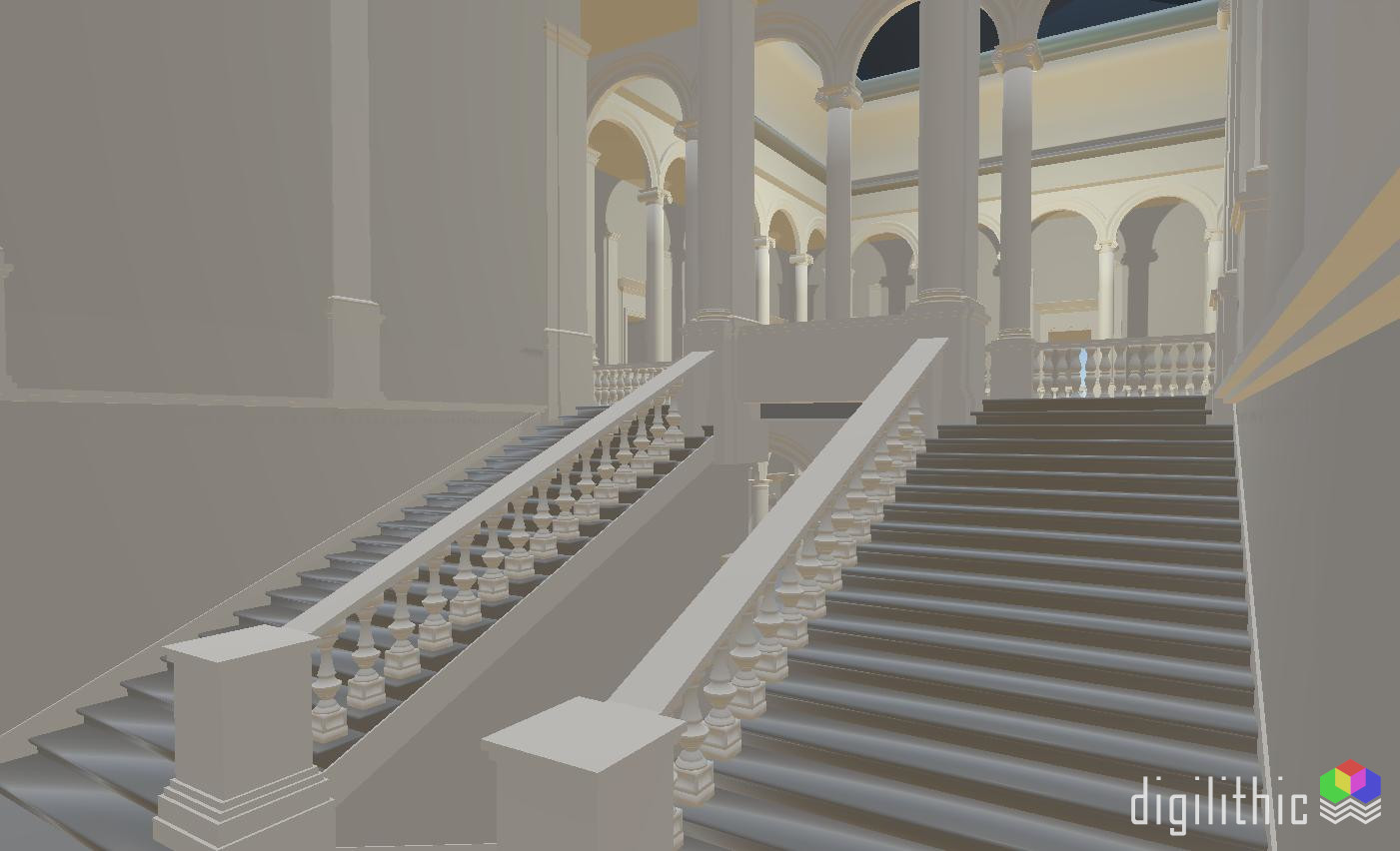The Main goal is to immerse the user in the simulation the rest is just content

Main parts of the virtual Museum are fotorealistic scans. From big statues made of stone to tiny wooden objects, almost everything is possible to capture.

To be able to interact with the models gives the user a new understanding of the exponats. All sides, even the bottom side can be ivestigated. With up to 16k resolution it is almost not possible to see a difference between the original and the digital reproduction.

Accurate 3D models of existing architecture gives the user the immersion of being in the original museum. This can be a model with wallpaintings and textures or even a abstract verion like we know from architecture models.

Based on constructional drawings and photographs a millimeter accurate reproduction of detail can be achieved. Here the size of the original hall has a difference from not even 5 cm to the model.

Another solution to enter a virtual room is by scanning the localities and bring them in Virtual Reality. Depending on the room sometimes remodelling the room is the better way, sometimes a scan is the better option.

Exhibiting of 2-dimensional objects, like paintings, or drawings in Virtual Reality brings new features for presenting. Simple adjustments to brightness and size let them shine in a new way. Especially digitally produced art or captured by a digital camera benefits from digital presentation.

Bringing monuments and memorials in the museum together side by side. No matter of size and location it can all fit in one virtual exhibition. Here we brought a monument from the west of Iceland together with a statue from a park in the center of Vienna.
.png)
